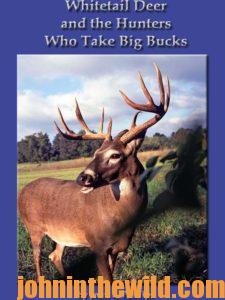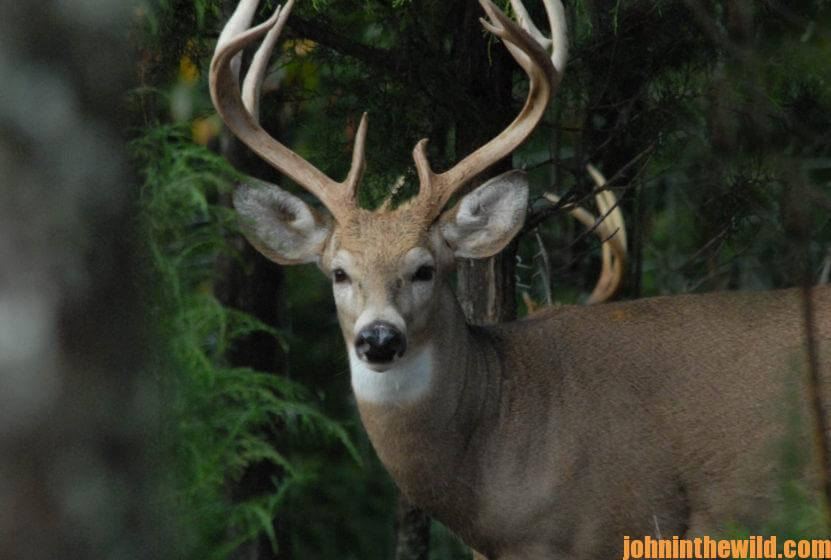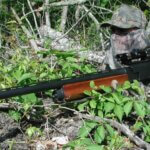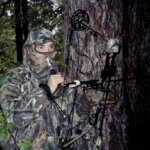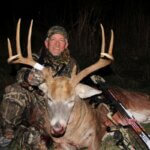Editor’s Note: Many deer hunters today are exploring shooting muzzleloaders like their ancestors did to hunt deer. You need to check the state’s regulations where you plan to hunt, because the rules vary from state to state. Some states offer muzzleloading-only seasons or allow muzzleloading during their primitive weapons’ seasons. Some states that don’t allow muzzleloading still may allow muzzleloading for various big-game species on specific WMAs. Some states have specific rules governing the use of pelletized powders, scopes, 209 primers, sabot and enclosed ignition. Arizona is considered one of the most relaxed states for muzzleloading laws. Consider muzzleloader hunting for deer to enjoy yet another facet of the outdoors.
Besides looking for thick cover and go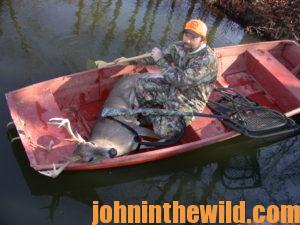 ing deep into the woods to pinpoint the deer’s escape routes, blackpowder hunters often can find high-racked bucks in regions that are inaccessible to other sportsmen. For instance, many times islands or sections of woods will be cut-off from a main hunting area by streams, rivers or creeks. These natural barriers such as water may prevent many hunters from getting to their deer. Yet a small canoe, a portable boat or a pair of waders may be all that’s required to reach some of these hard-to-get-to places. Because most blackpowder hunters are hunting the easy deer, the knowledgeable woodsman who can overcome natural barriers often can find the trophy deer. Be sure to check the regulations of the state where you’re hunting.
ing deep into the woods to pinpoint the deer’s escape routes, blackpowder hunters often can find high-racked bucks in regions that are inaccessible to other sportsmen. For instance, many times islands or sections of woods will be cut-off from a main hunting area by streams, rivers or creeks. These natural barriers such as water may prevent many hunters from getting to their deer. Yet a small canoe, a portable boat or a pair of waders may be all that’s required to reach some of these hard-to-get-to places. Because most blackpowder hunters are hunting the easy deer, the knowledgeable woodsman who can overcome natural barriers often can find the trophy deer. Be sure to check the regulations of the state where you’re hunting.
Sometimes water is not the only obstacle to be overcome. In rough terrain, the hunter may have to climb three or four steep mountains, walk a mile or two across a clear-cut or cross other natural barriers to get away from the crowd and reach better hunting grounds. Another natural barrier that prevents many hunters from taking trophy bucks is the weather. A driving rainstorm will spell the doom of many a blackpowder hunter’s trip. Since the trophy deer learns as much if not more about the hunters than the hunters do about the animals, I believe that the deer know that hunters are rarely in the woods under severe weather conditions, including rain and thunder storms, heavy snow or severe drops of temperature.
But deer hunters say that oftentimes during bad weather, big bucks will move. You may take a trophy deer on a scheduled hunt where you see no other hunters or vehicles in the woods other than yours. Many deer hunters prefer to stalk hunt on bad, rainy days. A camouflaged hunter can move quietly through the woods more easily on a rainy day than he can a sunny day because of the noise of the rain, the movement of the wind in the woods and the poor scenting conditions. Sometimes when the rain’s pouring down, you’ll see the deer feeding. But during a heavy rainstorm your best bet may be to look for deer in blown-down treetops or other thick cover. The deer often will go into these treetops to wait out the rain and then begin to move just as the storm stops.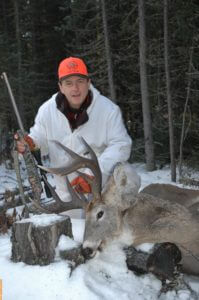
The key ingredient when hunting during foul weather is to make sure you keep your powder dry. Special caution should be taken for your powder horn and your percussion caps. The general rule of thumb is to place the powder and the caps in some type of plastic bag. Then put that plastic bag inside another plastic bag just to be sure moisture doesn’t get inside. Wet-weather hunting is difficult even for the modern-arms hunters but does create even more problems for the primitive woodsman. But most of the people who employ the old way of hunting accept a more-difficult challenge. For the ultimate blackpowder trophy deer hunter, this challenge is amplified one hundred fold. He not only has to be smarter and luckier than the deer he hunts, but he must be able to out-hunt the other shooters and take his buck with primitive firearms. The blackpowder hunter who masters his sport has bagged a big buck the way his forefathers once did. Even though he may not kill the numbers of deer that others do, he can take pride in knowing that he’s outhunted others to take the trophy that’s the best of the best.
To learn more about hunting deer, check out John E. Phillips’ book, “Whitetail Deer and the Hunters who Take Big Bucks,” available in Kindle and print versions at
(http://amzn.to/2bYwYOK) and available in Audible by December 1, 2019.